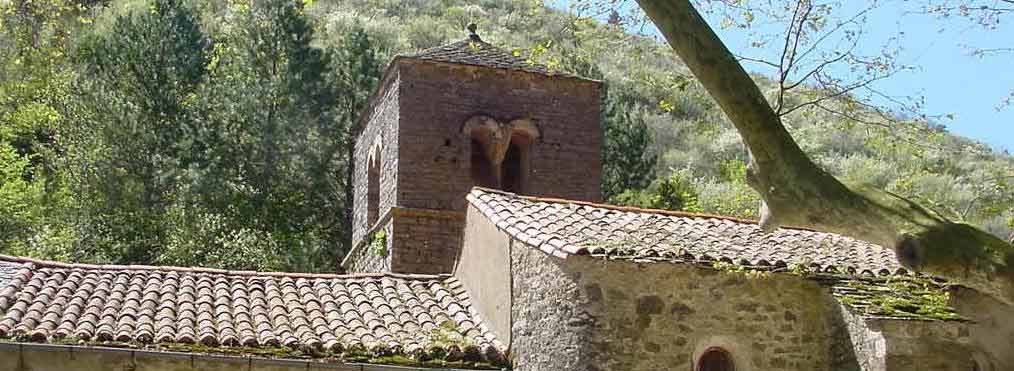NOTRE DAME DE NIZE

Three kilometers east of Lunas, on the departmental road n° 35, in a little woodland at the bottom of a narrow valley, is a tiny country church dedicated to the virgin birth.
The origin of this holy place is unknown but is thought to date back to the first century AD along with the abbey in Joncels to which it was attached. Its most propitious time began in the 12th Century when in 1136 it was mentioned in a famous proclamation from Pope Innocence ll and included among 28 churches under the jurisdiction of the abbey of Joncels as "Sancta Maria de Aniza".
Elevated to the rank of priory, the church is mentioned again in the 1223 list of churches in the diocese of Béziers, under the title "Prior de Transiliaco et Eniza".
The priory of Nize continued to serve as a parish church until the revolution, covering the hamlets of Nize, Val de Nize, Ladournié, Vasplongues, Briandes, Serres, Gours and other farms that have since disappeared.
As can be appreciated, this was a very large parish and in the 18th Century included 19 families and more than 100 people.
It has not been possible to make a complete list of successive priors appointed by the abbot of Joncels for the parish of Nize and the first for which there remain records was Béranger ALAMAN in 1358. In the 17th and 18th century, there are records of FERRIEU, DEJEAN, ARSSON, GROS, D’ANTANE, Jacques AZEMAR and Antoine PRIVAT, the last of the priors who subsequently had to submit to the Decree of the national assembly of 26 December 1790 and take an oath as required by the law. He did this on Sunday, 30 January 1791, in his church Notre-Dame de Nize, following the 10h00 parish mass, in the presence of the mayor of Lunas and other local dignitaries.
After the dissolution of the parish of Nize and its annexation to that of Lunas, the Prior PRIVAT no longer had an income and so became priest of Octon, where he died in 1837.
During the course of the 19th century, hermits settled the former priory, where the curate of Lunas undertook Mass on Sundays. As a result, the faithful from the former parish and its surroundings returned to their former customs and regularly attended to seek the protection of the Virgin Mother.
Today, there are no traces of the original church, the narrow part of the nave and the church tower are all that remain as witness to the medieval building. Quite often, masses are celebrated in this holy place by the Lunas priest, but the two most important events are the pilgrimages of the 15th of August and 9th of September, that attract numerous visitors from the surrounding area and particularly the Escandorgue.
To the plenary indulgence accorded by Pope Gregory XVI in a message on 9 May 1836, the persistence of the faithful must be added for their belief in the curative effect on eye diseases of a nearby spring. The Miraculous Fountain is built around the spring about 200 metres away from the church, just below the roadside. Here, after washing their eyes in the holy water with a cloth, the pilgrims pray for recovery and tie the cloth onto branches of surrounding trees.
Just a few years ago, the return of the pilgrimage took the form of a procession during which the faithful sang a hymn composed for the occasion by Alfred BOULOUYS and, despite the distance and the heat, ended in the Lunas church.